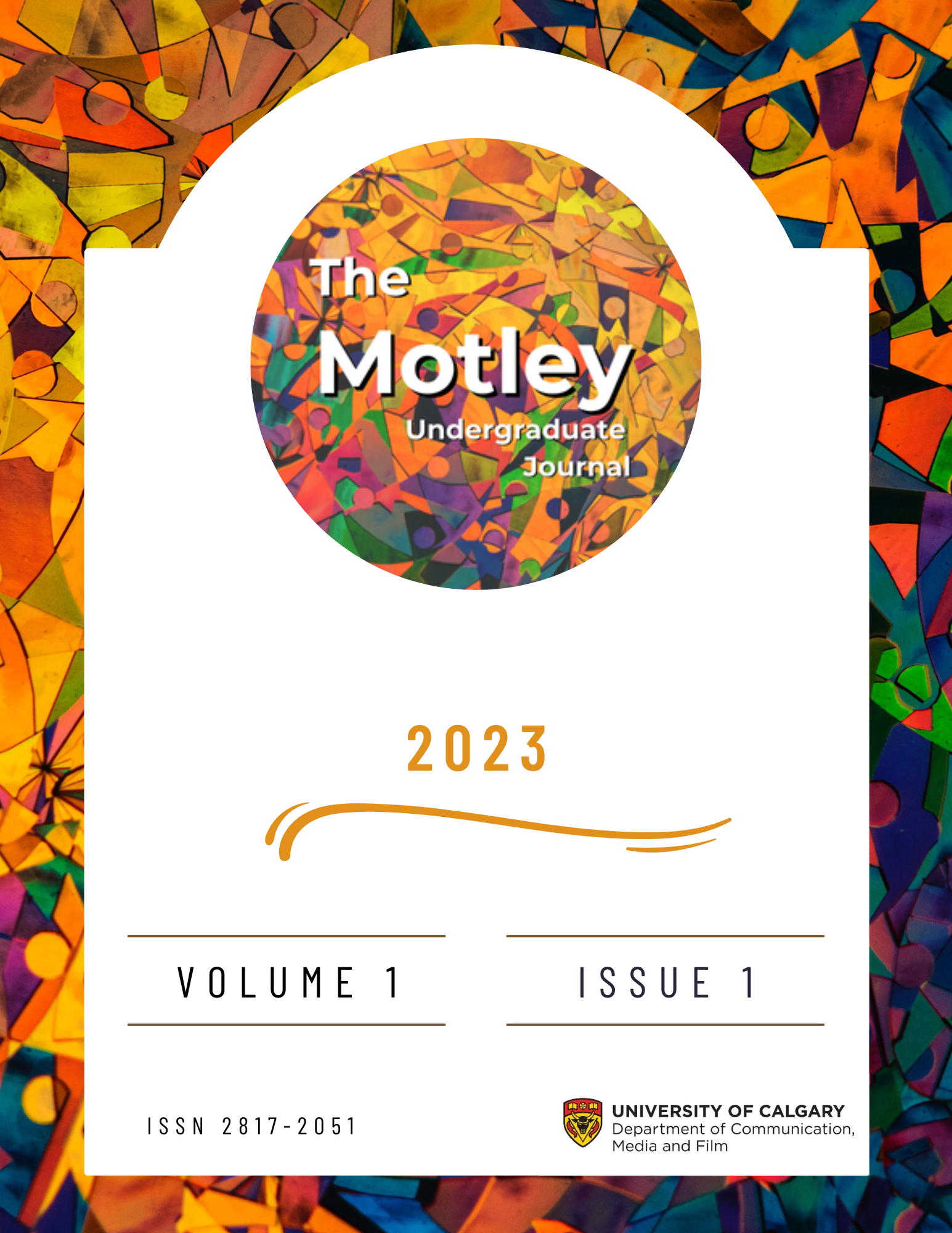Archaic methods, subculture sensibilities, outsider aesthetics & Instagram
A humble cultural artifact attempts to resist the almighty algorithm
DOI:
https://doi.org/10.55016/ojs/muj.v1i1.76355Keywords:
aesthetics, visual culture, subversive art, artifact analysis, social media algorithmsAbstract
This project grew from an assignment to design a potential cultural artifact that could resist the forces of control (often called "taste", reeking of cultural capital and long-gone scholars with their legacies of gatekeeping) within visual culture. During the idea-generating process, I quickly realized how easy, enjoyable and interesting actually creating such an artifact would be - and that I had the means to. So. I created an Instagram account, both to host the artifact(s) and be the artifact itself; a space online to populate and fill with homemade collages reflecting myself, my life, my "tastes" and, most of all, what sorts of materials cross my desk throughout a day (show flyers, magazines, poems, crumpled paperbacks and family photos, doodles and drawings and all that and more). This paper was written alongside the creation, generation and sharing of the account and collages, meaning that analysis informed experiment shaped analysis, and so on and so forth. This written portion of the project describes my experiences with the various stages of enacting this cultural artifact. Accompanying images were taken during this process. Where it will go next, now created, realized and analyzed, is beyond the scope of this paper, but certainly worth observing.
Downloads
References
Bourdieu, P. (1986). The Forms of Capital. In Szeman, I., & Kaposy, T (Eds.), Cultural theory: an anthology (pp. 81-93). Wiley-Blackwell.
Caroline Mills [@carolinemills]. (2022, March 15). Nobody Talks About The Rage That Comes After. [Photograph]. Instagram. https://www.instagram.com/p/CbJU0QSMk1k/?utm_source=ig_web_copy_link
Carlisle, W. (2016). Folk Art Masterpiece [Song]. On Too Nice to Mean Much. Willi Carlisle.
Certeau, M de. (1988). The practice of everyday life. (S. F. Rendall, Trans.). University of California Press. (Original work published 1980).
Corbett, M. (1945). Dotty goes for help because of Addgie…June 18, 1945, Mon. Afternoon [Painting]. Hirschl & Adler, New York, NY, United States. https://www.hirschlandadler.com/modern-inventory/mary-p-corbett-1930-20197
de Certeau, M. (1984). The practice of everyday life. (S. F. Rendall, Trans.). University of California Press. (Original work published 1980)
Deleuze, G. (1992). Postscript on the societies of control. In Szeman, I., & Kaposy, T (Eds.), Cultural theory: an anthology (pp. 139-142). Wiley-Blackwell.
Hardt, M. & Negri, A. (2000). Biopolitical production. In Szeman, I., & Kaposy, T (Eds.), Cultural theory: an anthology (pp. 143-149). Wiley-Blackwell.
Hebdige, D. (1979). The function of subculture. In Szeman, I., & Kaposy, T (Eds.), Cultural theory: an anthology (pp. 255-263). Wiley-Blackwell.
Horkheimer, M. & Adorno, T. (1944). The culture industry: Enlightenment and mass deception. In Szeman, I., & Kaposy, T (Eds.), Cultural theory: an anthology (pp. 40-52). Wiley-Blackwell.
Jameson, F. (1979). Reification and utopia in mass culture. In Szeman, I., & Kaposy, T (Eds.), Cultural theory: an anthology (pp. 60-71). Wiley-Blackwell.
Johnston, D. (1978). What Makes You Think You’re The One? [Painting]. Ro2 Art, Dallas, TX, United States. https://www.ro2art.com/daniel-johnston.html
Traylor, B. (1939). Blacksmith Shop [Painting]. Smithsonian American Art Museum, Washington, DC, United States. https://americanart.si.edu/exhibitions/traylor
Williams, R. (1958). Culture is ordinary. In Szeman, I., & Kaposy, T (Eds.), Cultural theory: an anthology (pp. 53-59). Wiley-Blackwell.
Williams, R. (1977). Dominant, residual and emergent. In Szeman, I., & Kaposy, T (Eds.), Cultural theory: an anthology (pp. 353-356). Wiley-Blackwell.
Downloads
Published
How to Cite
Issue
Section
License
Copyright (c) 2023 Calum Robertson

This work is licensed under a Creative Commons Attribution-ShareAlike 4.0 International License.
Copyright Policy
The Motley Undergraduate Journal is an Open Access article distributed under the terms of the Creative Commons Attribution 4.0 Share-Alike License. Under this license, users are free to share (copy, distribute and transmit) and remix (adapt) the contribution, including for commercial purposes, providing that the original work is properly cited. Under Creative Commons, authors retain copyright in their articles.
Author Self Archiving Policy
Authors are permitted to post their work online in institutional/disciplinary repositories or on their own websites. Pre-print versions posted online should include a citation and link to the final published version in The Motley Undergraduate Journal as soon as the issue is available; post-print versions (including the final publisher's PDF) should include a citation and link to the journal's website.

